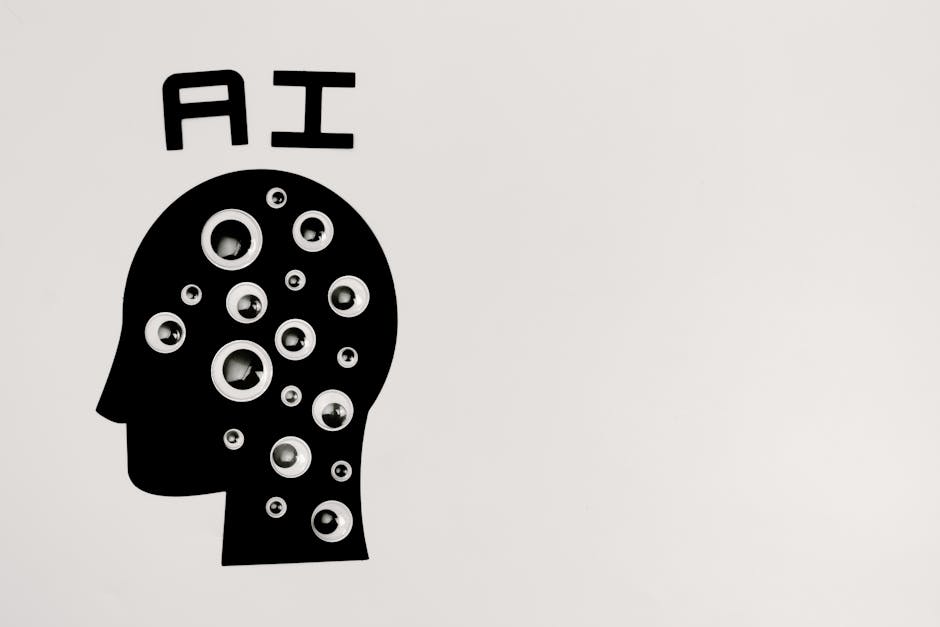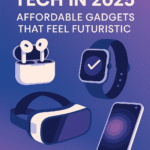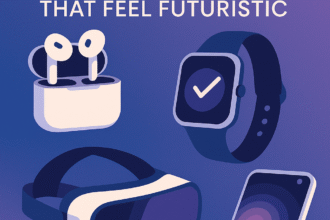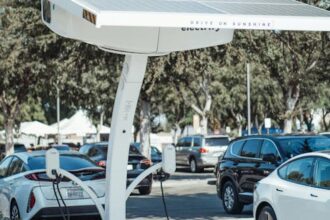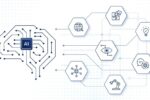The technological landscape is evolving at an unprecedented pace, and as we approach 2030, we’re standing on the brink of revolutionary changes that will fundamentally transform how we live, work, and interact with the world around us. From artificial intelligence reaching new heights of sophistication to quantum computing becoming mainstream, the next decade promises innovations that will reshape every aspect of human society.
Understanding these emerging trends isn’t just about satisfying curiosity—it’s about preparing for a future where technology will be more integrated into our daily lives than ever before. Whether you’re a business leader, a technology enthusiast, or simply someone interested in what lies ahead, these tech predictions for 2030 will help you grasp the magnitude of change coming our way.
Artificial Intelligence: The Great Transformation
AI Becomes Truly Intelligent
By 2030, artificial intelligence will have evolved far beyond today’s capabilities. We’re moving toward AI systems that can truly understand context, engage in meaningful conversations, and make complex decisions with human-like reasoning. The technology landscape is evolving at breakneck speed, and the trends we see today are only the beginning. As we look forward to 2030, advancements like decision-making robots, spatial computing, AI-to-AI communication, and neural interfaces promise to revolutionize every aspect of our lives.
Machine learning algorithms will become so sophisticated that they’ll be able to learn from minimal data, adapting quickly to new situations and requirements. This represents a significant leap from current AI systems that require massive datasets and extensive training periods.
AI-to-AI Communication Networks
One of the most fascinating developments expected by 2030 is the emergence of AI-to-AI communication networks. These systems will allow artificial intelligence programs to share information, collaborate on complex problems, and even negotiate with each other without human intervention. This interconnected web of AI systems will create unprecedented opportunities for problem-solving and innovation across industries.
Personal AI Assistants Evolution
The AI assistants of 2030 will be dramatically different from today’s voice-activated helpers. They’ll understand not just what you’re saying, but what you mean, taking into account your emotional state, personal history, and current context. These advanced assistants will proactively anticipate your needs, manage your schedule with incredible precision, and even handle complex personal and professional tasks autonomously.
Quantum Computing: From Laboratory to Mainstream
The Quantum Revolution Arrives
By 2030, quantum computing has shifted from existing largely in the R&D domain to impacting the technology and business landscape all around us. This transition marks one of the most significant technological shifts of our time, with implications that extend far beyond traditional computing applications.
Quantum computers will solve problems that are impossible for classical computers, including complex optimization challenges, drug discovery simulations, and cryptographic calculations. Financial modeling, weather prediction, and artificial intelligence training will all benefit from quantum computing’s exponential processing power.
Impact on Cybersecurity
The advent of practical quantum computing will necessitate a complete overhaul of current cybersecurity practices. Traditional encryption methods will become obsolete overnight, forcing organizations to adopt quantum-resistant security protocols. This shift will create both challenges and opportunities in the cybersecurity industry.
Quantum Internet Infrastructure
By 2030, we’ll see the early stages of quantum internet infrastructure, enabling ultra-secure communication channels that are theoretically impossible to intercept or hack. This quantum communication network will initially connect major research institutions and government facilities before expanding to commercial applications.
The Workplace Revolution: Remote, Hybrid, and Beyond
Immersive Remote Collaboration
The workplace of the future feels little like the workplace of today. Experts predict that the workplace will be more community-oriented and tech-enabled than ever before. Employees on-site will have immersive interactions with their remote colleagues in many areas of the workplace.
Virtual and augmented reality technologies will create workplace experiences that blur the line between physical and digital presence. Remote workers will feel as if they’re sitting in the same room as their colleagues, participating in meetings and collaborative sessions with unprecedented realism.
AI-Powered Productivity Tools
The workplace of 2030 will feature AI assistants that handle routine tasks, analyze data patterns, and provide intelligent recommendations. These tools will free human workers to focus on creative, strategic, and interpersonal activities that require uniquely human skills.
Flexible Work Ecosystems
Traditional office structures will give way to flexible ecosystems that adapt to individual work styles and project requirements. Smart buildings will reconfigure themselves based on occupancy patterns, meeting requirements, and even weather conditions, creating optimal work environments for different activities.
Healthcare Technology: Precision and Prevention
Personalized Medicine Revolution
By 2030, healthcare will be truly personalized, with treatments tailored to individual genetic profiles, lifestyle factors, and real-time health data. AI-powered diagnostic tools will detect diseases years before symptoms appear, enabling preventive interventions that could eliminate many chronic conditions.
Wearable Health Monitoring
Advanced wearable devices will continuously monitor dozens of health metrics, from blood chemistry to brain activity. These devices will work seamlessly with AI systems to provide real-time health recommendations and alert medical professionals to potential issues before they become serious.
Telemedicine and Remote Surgery
High-speed networks and haptic feedback technology will enable surgeons to perform complex operations remotely, bringing specialized medical expertise to underserved areas. Virtual reality will allow medical students to practice procedures in risk-free environments, improving training quality and accessibility.
Transportation: The Autonomous Future
Self-Driving Vehicles Everywhere
By 2030, autonomous vehicles will be commonplace on roads worldwide. These smart cars won’t just drive themselves—they’ll communicate with each other and with traffic infrastructure to optimize routes, reduce congestion, and virtually eliminate traffic accidents.
Flying Cars and Urban Air Mobility
While still in early stages, urban air mobility solutions will begin operating in major cities by 2030. Electric vertical takeoff and landing aircraft will provide rapid transportation for short to medium distances, fundamentally changing how we think about urban mobility.
Hyperloop and High-Speed Transport
Revolutionary transportation technologies like hyperloop systems will begin commercial operations, enabling travel between major cities at speeds exceeding 600 miles per hour. This technology will transform regional economies and make long-distance commuting practical for the first time.
Smart Cities and IoT Integration
Connected Urban Ecosystems
Cities in 2030 will function as integrated smart ecosystems, with sensors and AI systems managing everything from traffic flow to energy distribution. How we’ll live with technology in 2030 will be determined by four key technology trends: Ambient Computing, Smart(er) Devices, Cybersecurity and Ethics, and Information and Analytics.
Environmental Monitoring and Response
Smart city infrastructure will continuously monitor air quality, noise levels, and energy consumption, automatically adjusting systems to optimize environmental conditions and resource usage. This real-time environmental management will significantly improve quality of life in urban areas.
Predictive Infrastructure Maintenance
AI systems will predict when infrastructure components need maintenance or replacement, preventing failures before they occur. This predictive approach will reduce costs, improve safety, and ensure that city services remain reliable and efficient.
Education Technology: Personalized Learning
AI Tutors and Adaptive Learning
Artificial intelligence (AI), cloud computing, and virtual and augmented reality (VR and AR) are among the key technologies that will underpin the delivery of education in 2030. AI tutors will provide personalized instruction adapted to each student’s learning style, pace, and interests.
Virtual and Augmented Reality Classrooms
Students will explore ancient Rome, manipulate molecular structures, and conduct virtual chemistry experiments from their classrooms. These immersive experiences will make abstract concepts tangible and engage students in ways traditional teaching methods cannot.
Global Collaborative Learning
Technology will connect students from around the world, enabling collaborative projects that span continents and cultures. This global classroom approach will prepare students for an increasingly interconnected world while fostering cross-cultural understanding.
Robotics: From Industrial to Personal
Humanoid Robots in Daily Life
Humanoid robots: Labor shortages caused by long-term demographic shifts, along with significant advances in large-language models will drive the development of sophisticated humanoid robots capable of performing complex tasks in homes, offices, and public spaces.
Service and Care Robots
Robots will provide eldercare services, assist individuals with disabilities, and perform household tasks with increasing sophistication. These service robots will be designed to interact naturally with humans, understanding social cues and responding appropriately to different situations.
Collaborative Industrial Robots
Manufacturing will be transformed by robots that work alongside human workers, combining the precision and consistency of machines with human creativity and problem-solving abilities. These collaborative systems will increase productivity while creating new types of jobs that require both technical and interpersonal skills.
Biotechnology and Human Enhancement
Gene Editing Becomes Routine
CRISPR and other gene-editing technologies will become standard medical tools, allowing doctors to correct genetic defects before birth and treat previously incurable genetic diseases. This technology will also enable enhanced human capabilities, though ethical considerations will shape its application.
Brain-Computer Interfaces
Neural interfaces will begin to restore function to individuals with paralysis and other neurological conditions. While still experimental, these technologies will lay the groundwork for more advanced human-computer integration in subsequent decades.
Synthetic Biology Applications
Engineered biological systems will produce everything from pharmaceuticals to building materials, creating sustainable alternatives to traditional manufacturing processes. These biological factories will operate with precision and efficiency, reducing environmental impact while producing novel materials and compounds.
Energy and Sustainability Technology
Renewable Energy Dominance
By 2030, renewable energy sources will provide the majority of global electricity generation. Advanced energy storage systems will solve the intermittency problem, making renewable energy reliable and cost-effective for all applications.
Fusion Power Progress
While commercial fusion power may still be a few years away, 2030 will see significant progress in fusion technology, with demonstration reactors proving the viability of this clean, abundant energy source.
Carbon Capture and Climate Technology
Large-scale carbon capture and storage systems will begin removing significant amounts of CO2 from the atmosphere. These technologies, combined with advanced climate modeling and intervention systems, will play a crucial role in addressing climate change.
Challenges and Considerations
Privacy and Security Concerns
As technology becomes more integrated into our lives, protecting privacy and ensuring security will become increasingly complex. The abundance of personal data generated by smart devices and AI systems will require new approaches to data protection and user consent.
Digital Divide Issues
The rapid pace of technological advancement risks creating new forms of inequality between those who have access to cutting-edge technology and those who don’t. Addressing this digital divide will be crucial for ensuring that the benefits of technological progress are widely shared.
Ethical AI Development
As AI systems become more powerful and autonomous, ensuring they align with human values and operate ethically will become paramount. This will require ongoing collaboration between technologists, ethicists, and policymakers.
Workforce Adaptation
The transformation of work by AI and automation will require massive retraining and education efforts to help workers adapt to new roles and responsibilities. Society will need to develop new models for education, career development, and social support.
Preparing for the 2030 Technology Landscape
Skills for the Future
Success in 2030 will require a combination of technical skills and uniquely human abilities. Critical thinking, creativity, emotional intelligence, and adaptability will be as important as technical expertise in programming, data analysis, or robotics.
Organizational Adaptation
Businesses and institutions will need to become more agile and adaptable to keep pace with rapid technological change. This will require new organizational structures, management approaches, and corporate cultures that embrace continuous learning and innovation.
Regulatory and Policy Development
Governments will need to develop new regulatory frameworks that protect citizens while allowing beneficial technologies to flourish. This balance will require ongoing dialogue between policymakers, technologists, and civil society.
Embracing the Future
The tech predictions for 2030 paint a picture of a world transformed by artificial intelligence, quantum computing, advanced robotics, and countless other innovations. While these changes will bring challenges, they also offer unprecedented opportunities to solve global problems, improve quality of life, and expand human capabilities.
Technology adoption will be a main driver of business transformation in the next five years, with over 85% of organizations stating adopting new and frontier technologies would be their primary change-driver. This statistic underscores the urgency of preparing for the technological revolution ahead.
The key to thriving in this rapidly changing landscape is maintaining a balance between embracing innovation and addressing its challenges thoughtfully. By staying informed about emerging technologies, developing relevant skills, and participating in discussions about their ethical and social implications, we can help shape a future where technology serves humanity’s best interests.
As we stand on the threshold of 2030, one thing is certain: the next decade will bring changes that will seem miraculous by today’s standards. The question isn’t whether these changes will occur, but how well we’ll adapt to them. By understanding these tech predictions for 2030 and preparing accordingly, we can ensure that we’re ready to participate fully in the extraordinary future that awaits us.
The journey to 2030 has already begun, and the destinations we’ll reach will be determined by the choices we make today. Whether in artificial intelligence, quantum computing, biotechnology, or any other field, the technologies of 2030 will be the result of investments, decisions, and innovations happening right now. The future is not just something that happens to us—it’s something we actively create, one breakthrough at a time.
